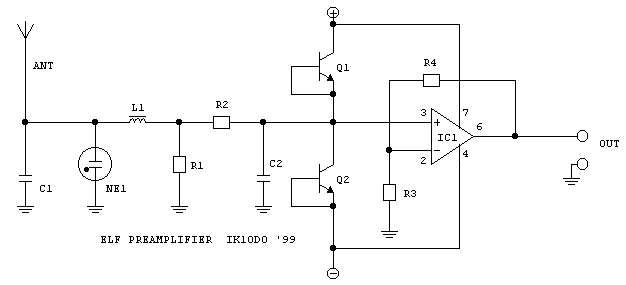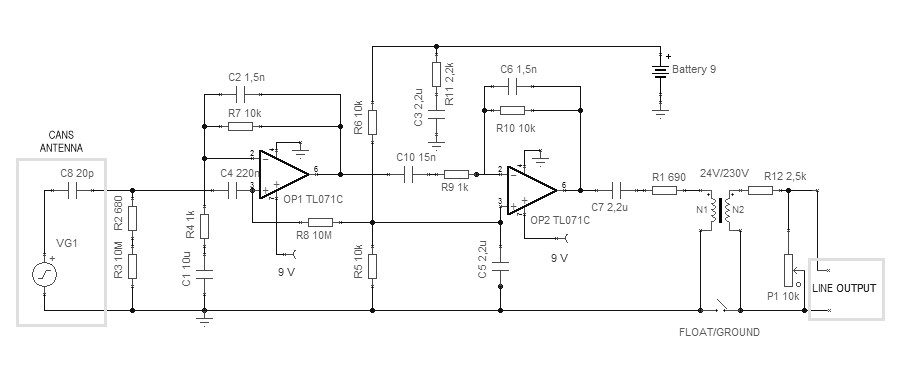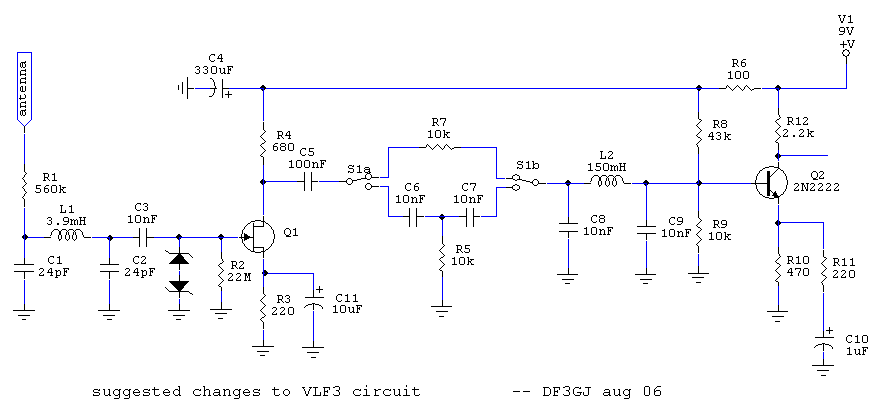

The ot her VLF amateur science activity involves looking for naturally created radio sigjuds called whistlers. Sudden ionospheric tlisturbances (SJDs) can l>e noted by sudden increases in VLF signal levels (Taylor and Stokes, 1991 Taylor, l!*)3) The SID monitoring activity occurs in the 20 to 30 kHz region, although some articles cite as high as 6!) kHz. Some are active in monitoring solar activity that affects radio propagation.
#VLF RECEIVER CIRCUIT TV#
As a result of TV interference, it is common to find VLKers listening during daylight hours and during the period between mid flight and daybreak.Īmateur scientists use VLF receivers in two different types of activity.

And furthermore, the TV horizontal pulse produces its own "sidebands," so each harmonic actually wipes out a lot of spectrum space on either side of the integer multiple of 15.734 kHz, Listening to VLF allows you to identify the evenings when a popular TV' presentation is on the air. As a result, harmonics from television sets can be found up and down the VLF spectrvim. The horizontal oscillator in TV receivers operates at 15.734 kHz, and it is a pulse. The second ferm of interference is the neighborhood television sets. In addition, the large amounts of power carried by normal residential power lines makes even the higher harmonics at least strong enough to interfere with sensitive receivers. The high harmonics are caused by harmonic-laden alternating current from the power lines. Altho\igh it might seem counterintuitive tiiat a 60-Hz signal could be of much concern at, for example. First, the 60-Hz power lines are terrible offenders. Besides the fact that, propagation doesnt support "skip1' the way the 20-m ham band does, huge noise signals are in the VLF region.

Other stations, in both the United States and Abroad, are found throughout the VLF region.īut DX-ing in the VLF band is not all tlxat easy. Navy operates submarine communications stations in the VLF region, NSS on 21.4 kHz from Annapolis, Maryland (400 kW) and NAA on 24 kHz from Cutler, Maine (1000 kW) being two most commonly heard. WWVB is a very accurate time and frequency station and for many purposes is preferred over the high-frequency WWV and WWVH transmissions. This station is operated from Colorado by the National Institutes for Standards and Technology (NIST). The reason for this seemingly arbitrary designation is that many ham-band and SWL communications receivers operate down to 100 kHz and only a few operate below that limit.Ī lot of radio stations are active in the region below 100 kHz, Perhaps the best-known station is WWVB on 00 kHz. For purposes of this chapter VLF represents the 5- to 100-kHz region. The very tow frequencies (VLF) are located between a few kilo hertz and around 300 kHz, depending on whose definition is used.


 0 kommentar(er)
0 kommentar(er)
